When advertisers and publishers traded directly on the market, the media buying seemed to be much simpler. The era of algorithmic buying, programmatic in particular, brought more parties to that process, sparking the wave of confusion among people who are not into ad tech much. While experts keep tossing around abbreviations like DSP, DMP, CDP, ATD, etc., the difference between the concepts like a Demand Side Platform and an Ad Network may be hard to grasp for the ad tech rookie.
If you’re taking your first steps in programmatic buying and selling, welcome aboard. Let’s start with defining a DSP and an ad network in the simple terms.

What is a Demand-Side Platform?
A Demand-side platform is an advertising technology used by advertisers in the real-time bidding auctions. It allows them to buy ad inventory from multiple suppliers at the same time, including individual publishers, ad networks, and ad exchanges. The DSP network keeps all available suppliers in the one interface, simplifying ad buying management for an advertiser.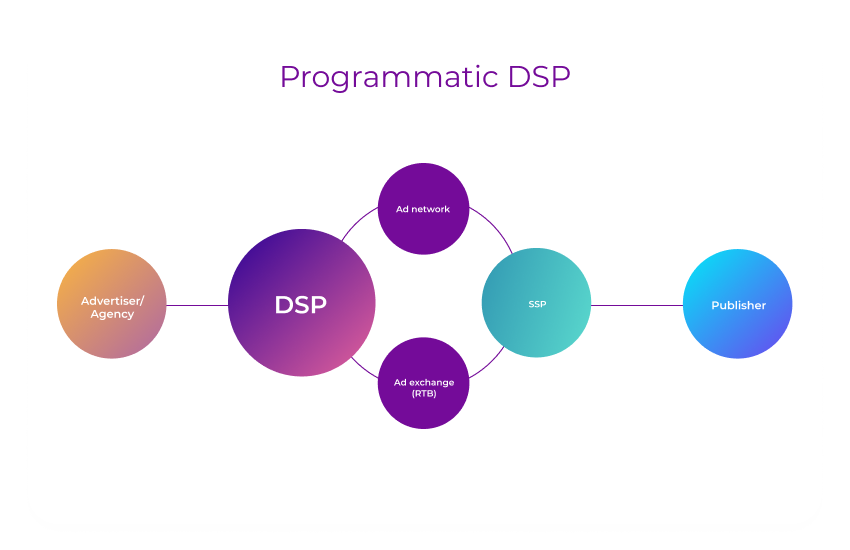
A DSP is one of the fundamental tools in programmatic advertising, which means that human participation in the auction is nearly eliminated. Demand-Side Platforms along with their flip-sides — Supply-Side Platforms — automatically match publisher inventory with a suitable ad unit according to the targeting parameters set by advertisers and publishers. This happens in a matter of milliseconds, and that’s what makes it the most cost-effective method of ad inventory buying and selling.
Learn about the DSP’s principle of work here.
What is a Digital Advertising Network?
An ad network is an intermediary between advertisers and publishers, or between DSPs and SSPs in a case of programmatic advertising. Digital advertising networks collect inventory from publishers, sort it into categories and then offer those “packages” of inventory to advertisers based on the audience segments.
There are different types of advertising networks; each of them is focused on a specific purpose.
Horizontal ad networks
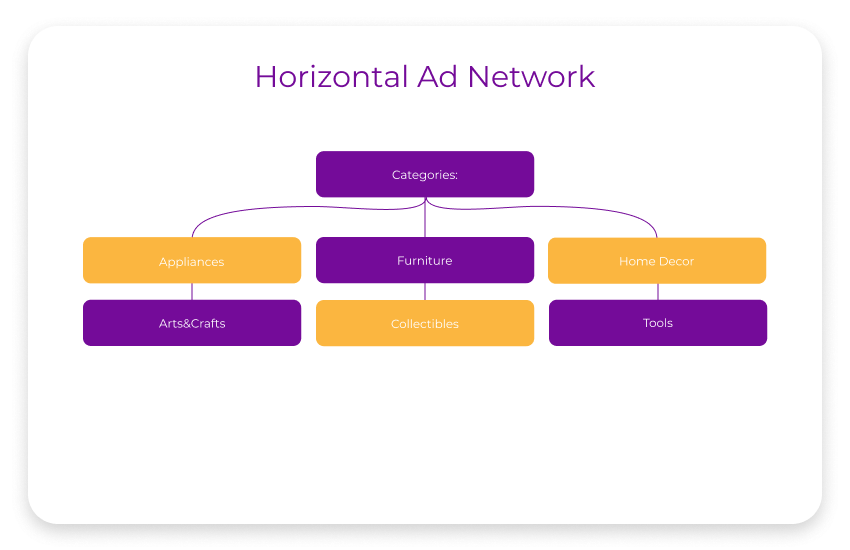
Horizontal ad networks work with a multitude of publishers, the greatest benefit of such network is that the chance for the publisher to join is very high, no barriers on the way. At the same time, they function based on a CPC model that means the payment occurs only if the visitor clicks on the ad. Such a network is the most beneficial for the ad campaign with a low budget, and the ability to target will be very limited.

Vertical ad networks
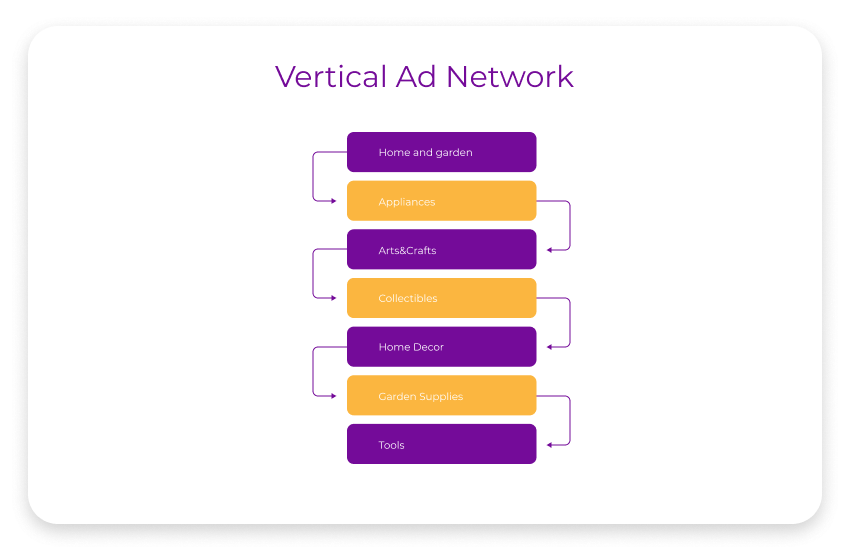
Vertical ad networks have the option to target visitors. Such networks, however, will work with publishers whose resource falls into a specific niche, such as lifestyle, sports, hobbies, family, and so on. Some networks will work with publishers exclusively based on niche, so if website doesn’t fit, the publisher won’t be presented.
Premium ad networks
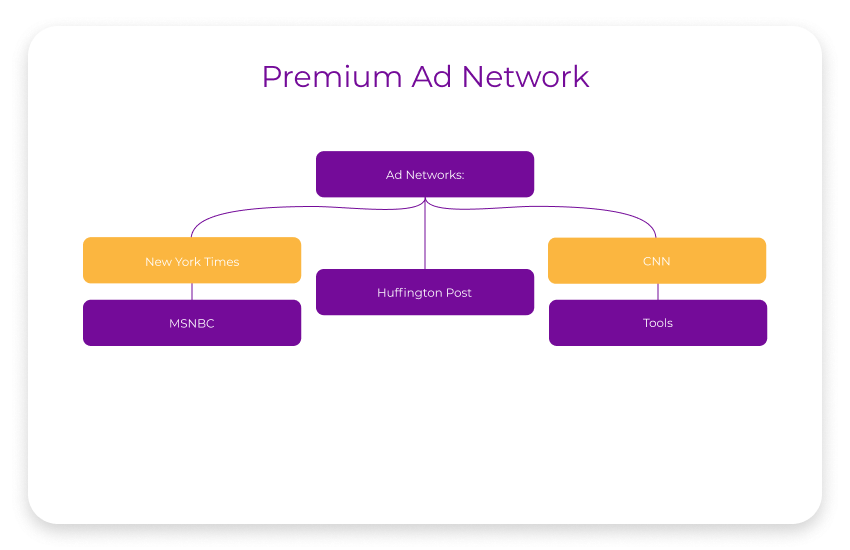
Premium ad networks will only accept the top-notch quality inventory with the highest levels of traffic like The Guardian or Huffington Post, so this one is always difficult to join. At the same time, it is the safest and best quality ecosystem for online media trading.
No more confusion
Ad networks are often confused with ad exchanges. Unlike an ad network, an ad exchange is a digital marketplace used by demand and supply sides to trade their options directly. Demand-Side Platforms have access to multiple ad networks and ad exchanges; that’s why they ensure the broadest possible choice of ad inventory.
Read more about the differences between ad networks and ad exchanges.
Comparison Table: The Differences Between DSP and Ad Network
Let’s summarize the major features of both ad networks and DSPs in the following table:
Benchmark | Ad Network | DSP |
Key Characteristic | A company that connects publishers and advertisers. | A technology that helps advertisers buy ads programmatically. |
Users | Publishers, advertisers, and agencies. | Advertisers only. |
Transparency | Lacks transparency, since both advertisers and publishers are not aware of partners they’re dealing with. | Offers more transparency, as media buyers can choose websites to buy inventory from on their own. |
Audience segmentation | Has pre-defined audience segments and categories. The client can’t change or update them. | Advertisers can target their audience more precisely, applying their custom filters and adjustments. |
Real-Time Bidding | Not all ad networks support real-time bidding. | DSPs are designed to implement real-time bidding. |
CPM | CPM is fixed and is determined by the ad network. All impression cost the same regardless of their value. | The real value of each impression defines its CPM. Advertisers are able to set any bids they want. |
Automation | Ad networks are not automated and require separate contracts for each purchase. | All processes are carried out automatically by the smart algorithms of the platform. |
Examples | Google's AdSense, Yahoo Publisher Network. | SmartyAds DSP |
Making the Final Choice: Ad Network vs. DSP
Lack of control and low cost-efficiency makes advertisers prefer a DSP over an ad network. Ad networks have a number of significant shortcomings such as masked site reporting and fixed CPM. They were a huge step forward in times we didn’t have advanced automation software, but since programmatic has evolved, advertisers don’t need to deal with ad networks directly anymore.
DSPs provide you with an unlimited inventory supply from multiple sources and precise targeting options to create custom audience segments. The advertiser gets access to a plethora of publishers all over the globe and only has to manage advertising campaigns, while the media buying and planning process is implemented via real-time bidding.
To start buying inventory programmatically, you need to sign up for a Demand-Side platform. Smarty Ads offers: a sophisticated DSP for granular campaign optimization.
Reinforce your brand advertising, sign up at SmartyAds DSP today!

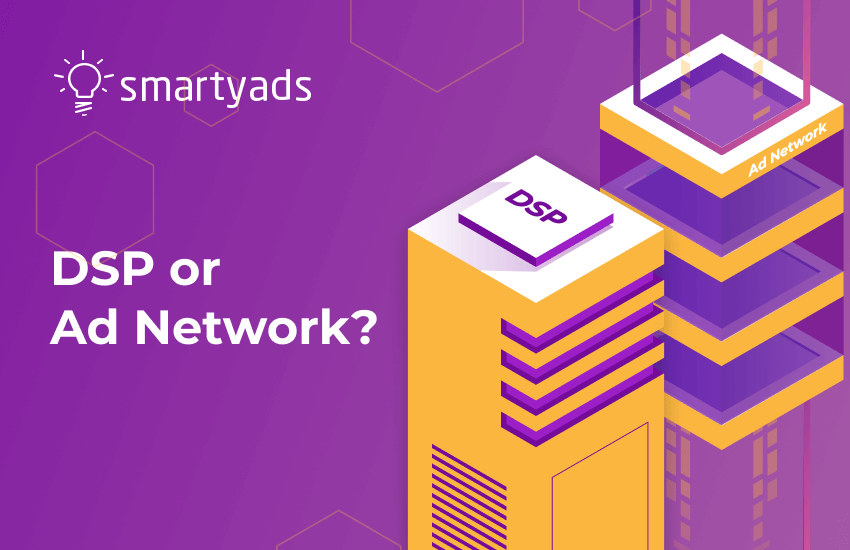
.webp)


